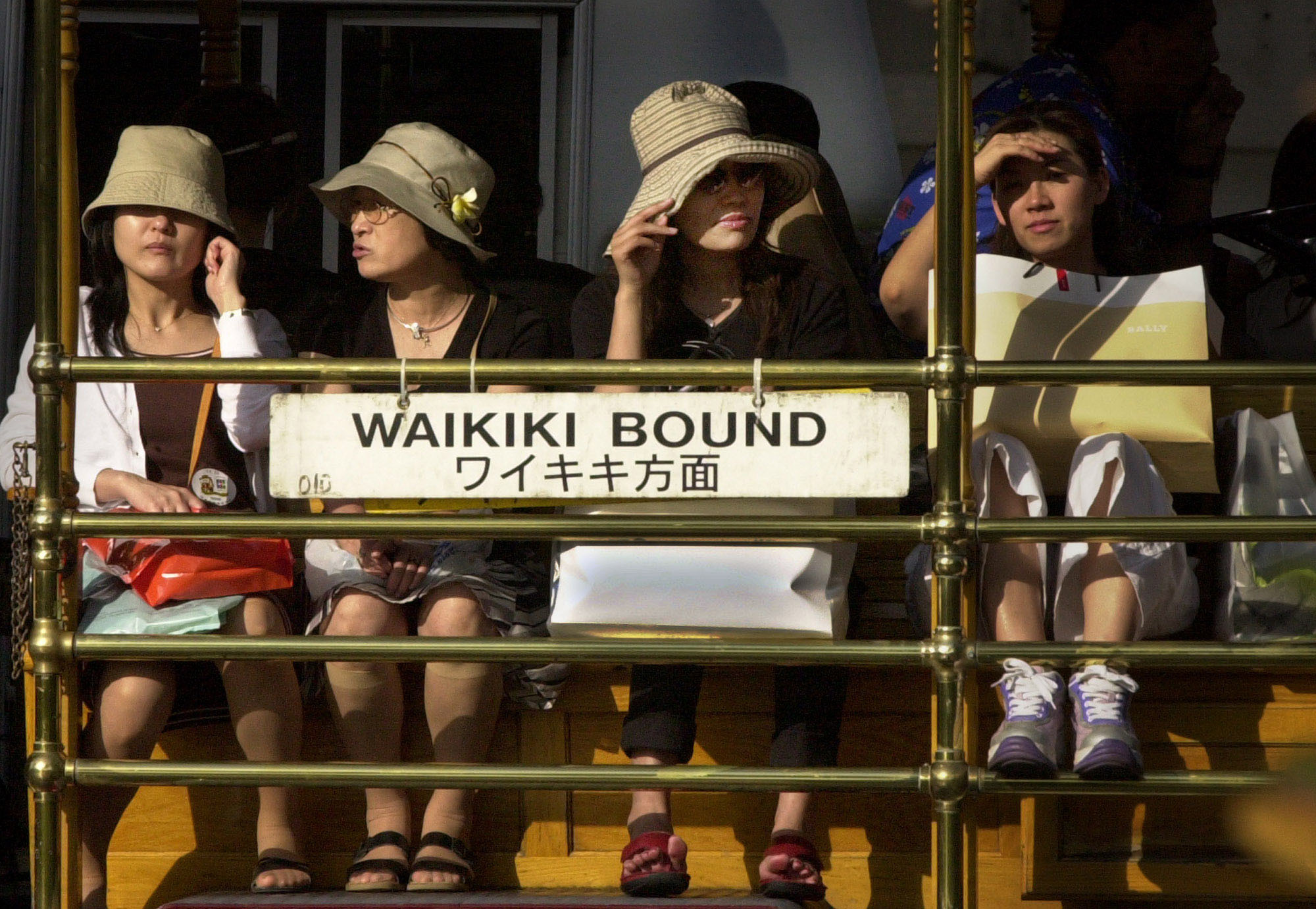In January, All Nippon Airways announced it would buy three A380 aircraft from French manufacturer Airbus, a move that surprised some industry people since the A380, which seats 525, is one of the biggest planes in the world and the airline trend now is for smaller vessels. ANA is keen to take advantage of the expansion of Tokyo's Haneda airport for international flights. And in Japan, outbound flights means going to Hawaii.
ANA now carries more passengers than rival Japan Airlines, but JAL carries the most from Haneda to Hawaii — about 35 percent of the total number of Japanese passengers who go there — with ANA handling about 20 percent. The problem isn't getting customers, since flights for all airlines between Japanese airports and Hawaii are running at 80-90 percent capacity. By using the A380, ANA can substantially increase the number of people it carries without increasing the number of flights. It already has three A380s, and in the future may have even more, since ANA Holdings owns 16.5 percent of low-cost carrier (LCC) Skymark, which, though currently going through rehabilitation with ANA's help, ordered six A380s before it filed for bankruptcy.
Hawaii is very important, since the overall number of outbound Japanese passengers continues to decrease. Only Hawaii-bound passengers have seen a slight increase. It is without a doubt the most resilient Japanese travel destination. Last year, 1.5 million Japanese people went to Hawaii. The peak year was 1997, when 2.2 million went there. The drop in travelers has been notable, caused mainly by a generational change that saw young people turn away from travel in general, and exacerbated later by the 2007 worldwide recession sparked by the failure of Lehman Brothers and a decrease in the value of the yen.


















With your current subscription plan you can comment on stories. However, before writing your first comment, please create a display name in the Profile section of your subscriber account page.